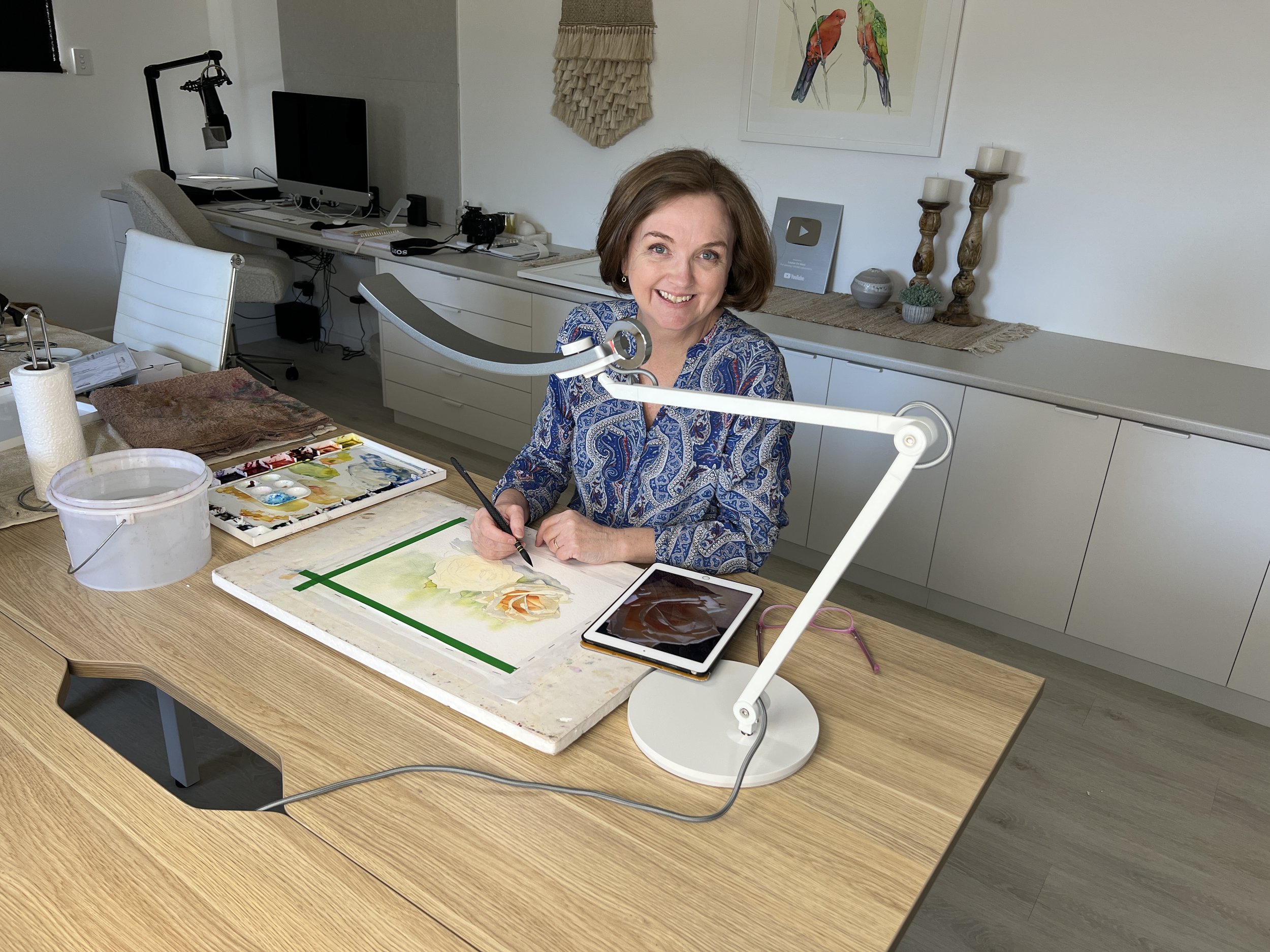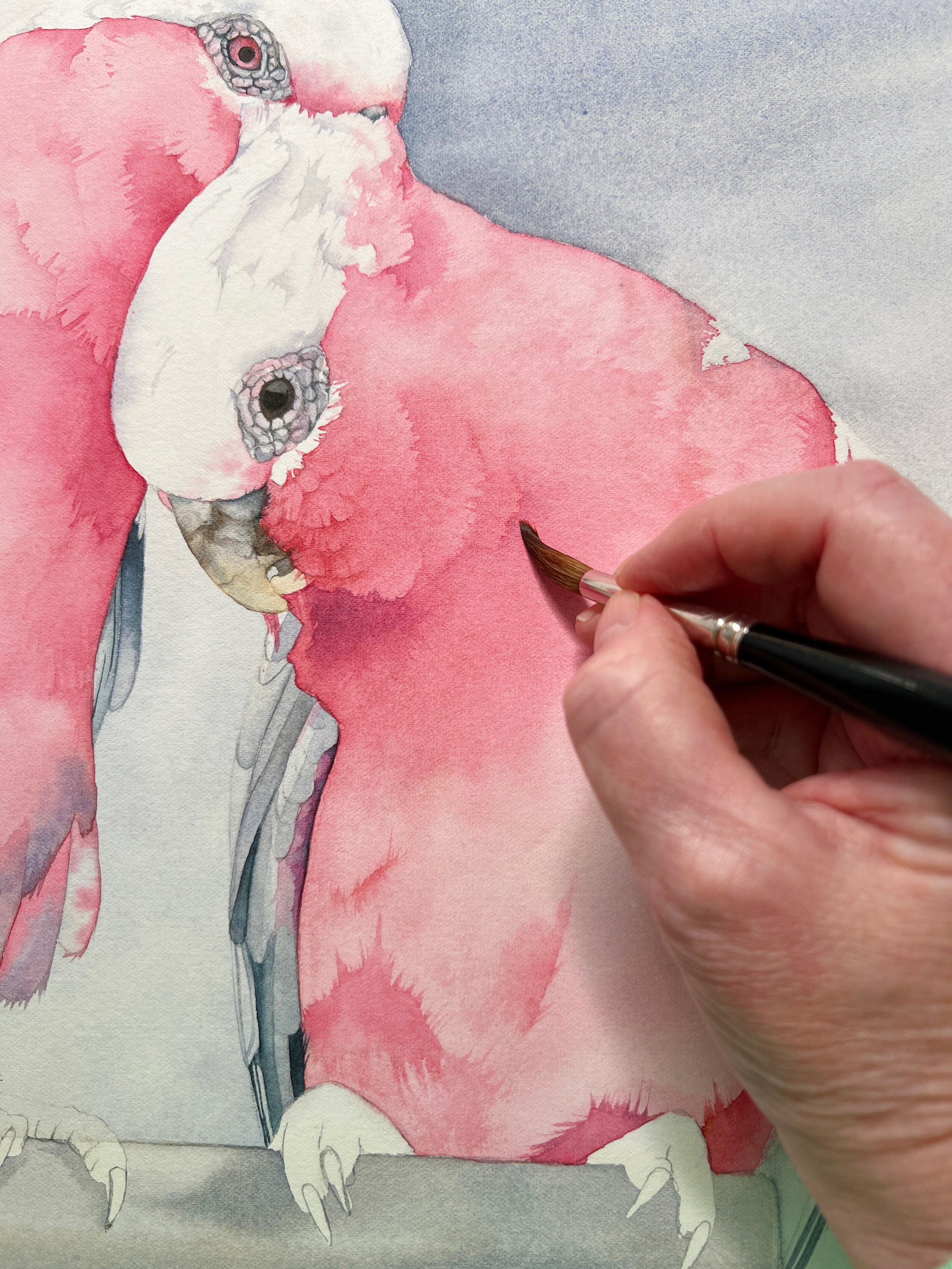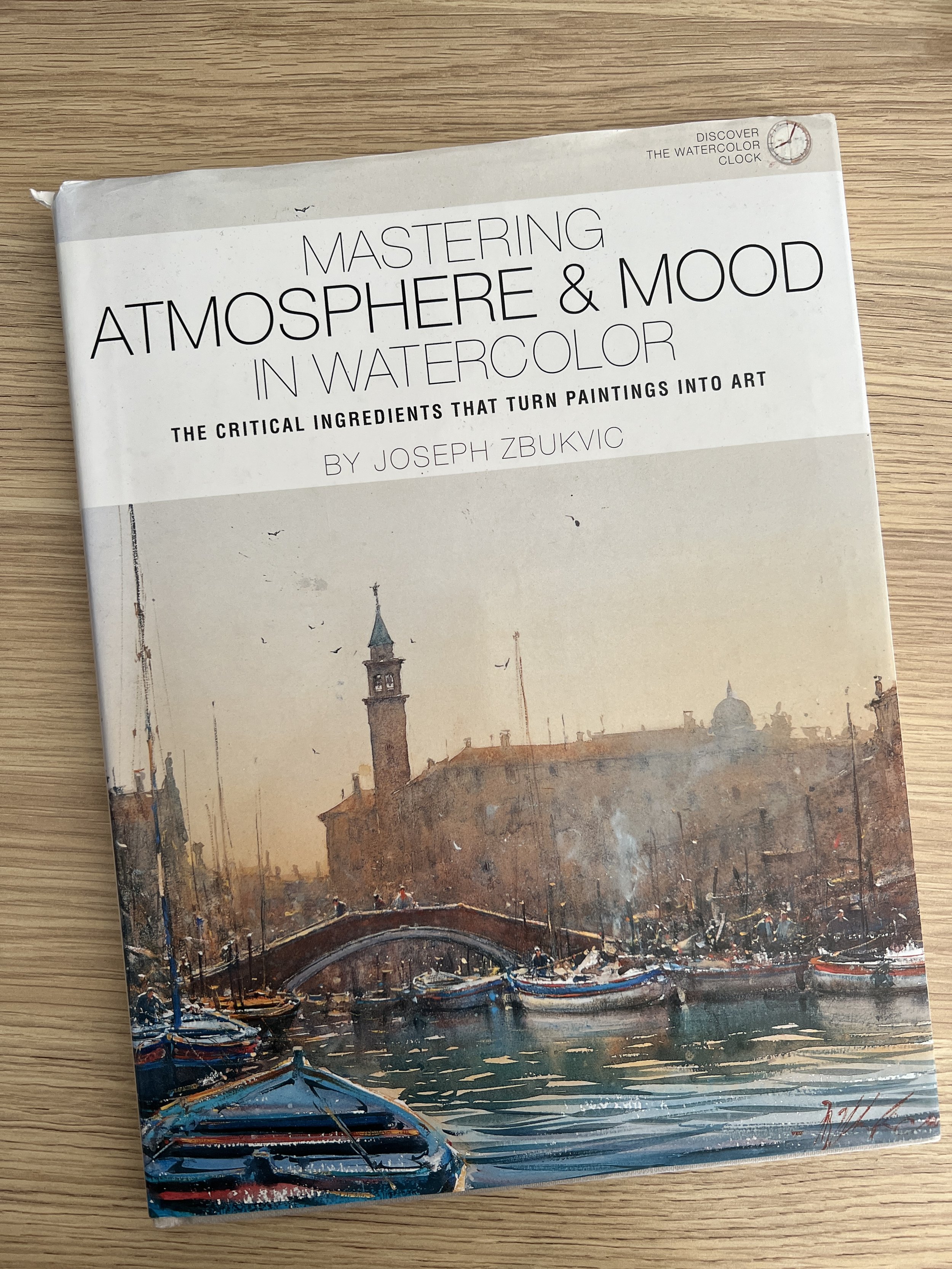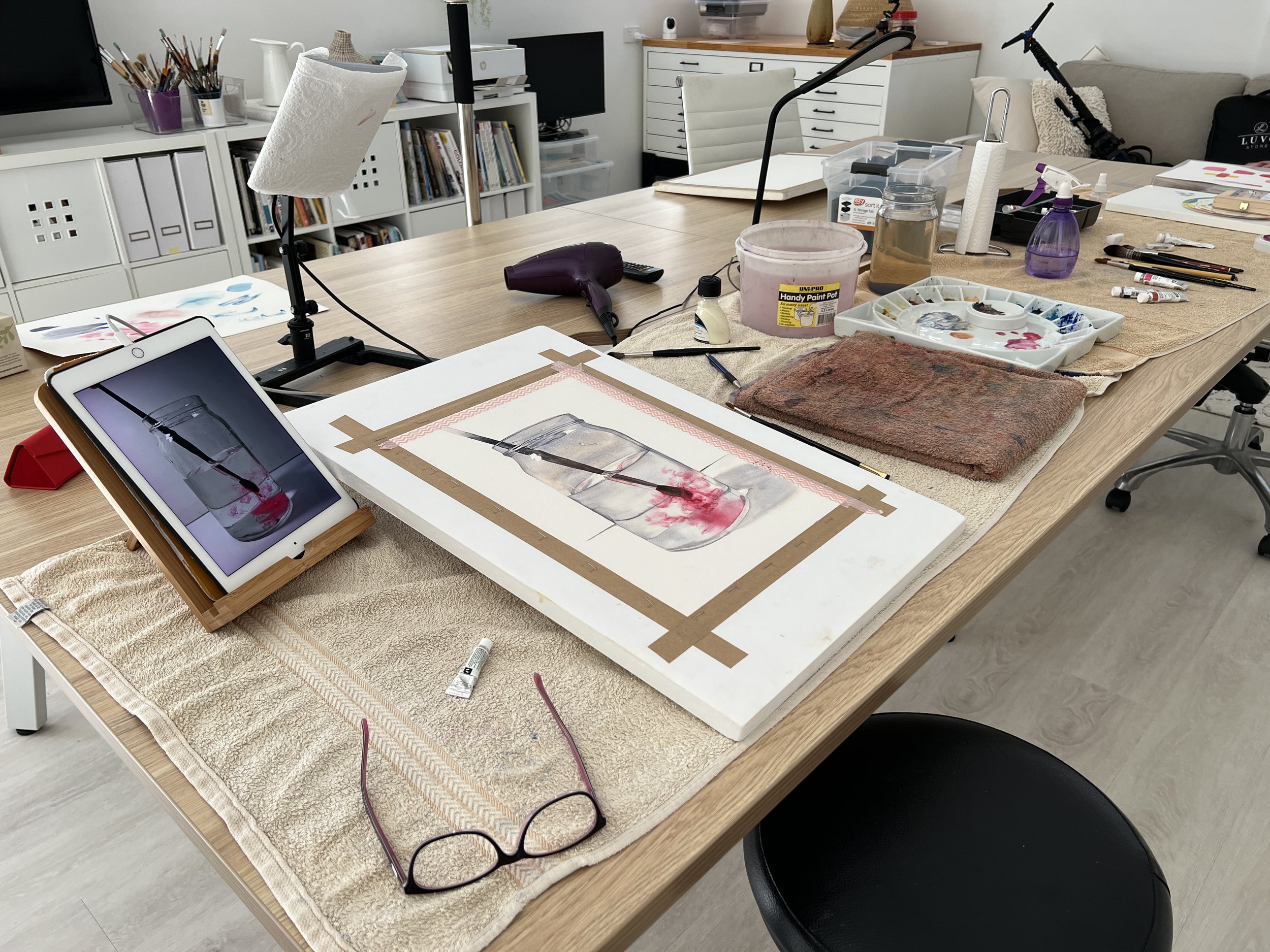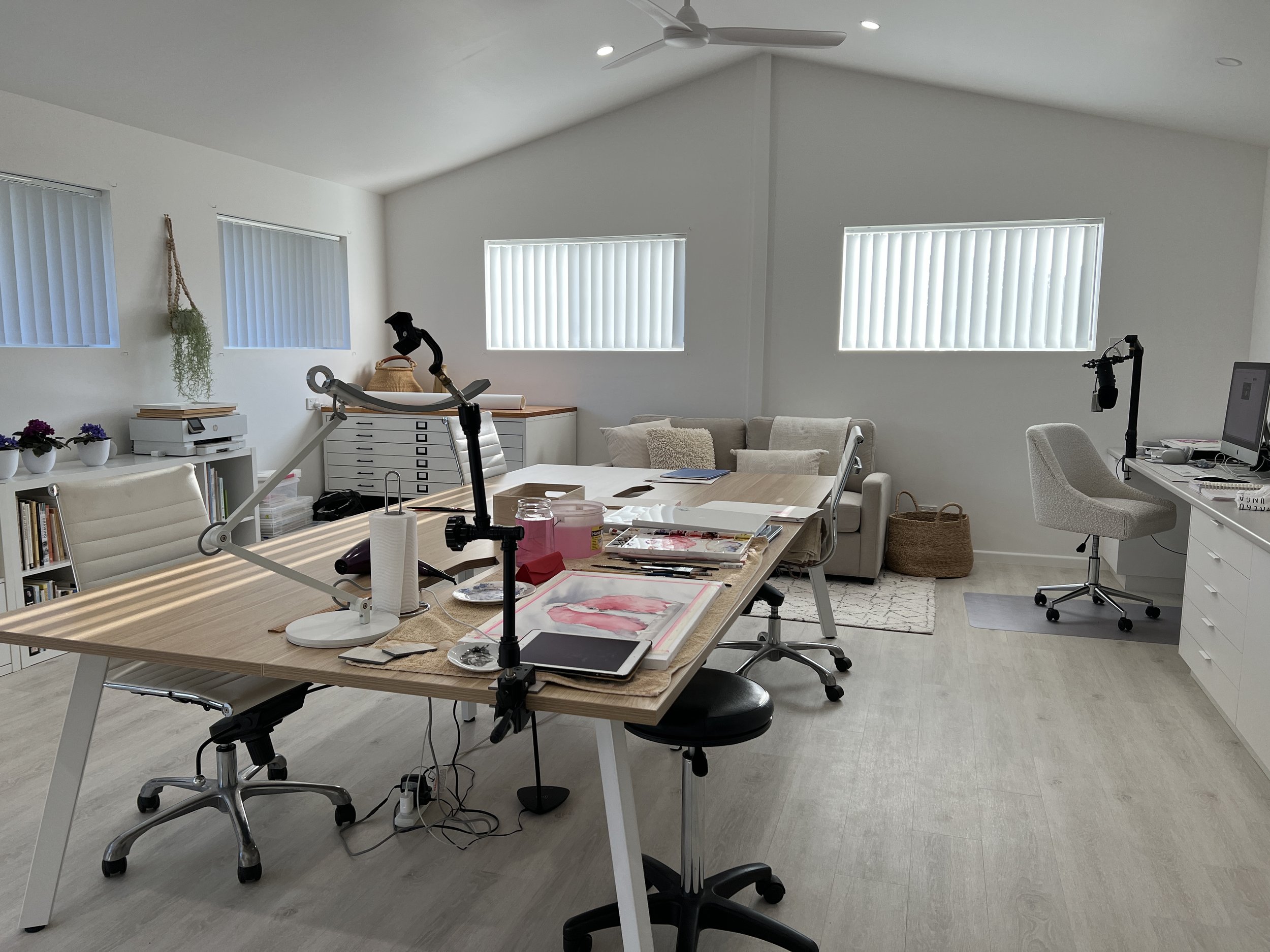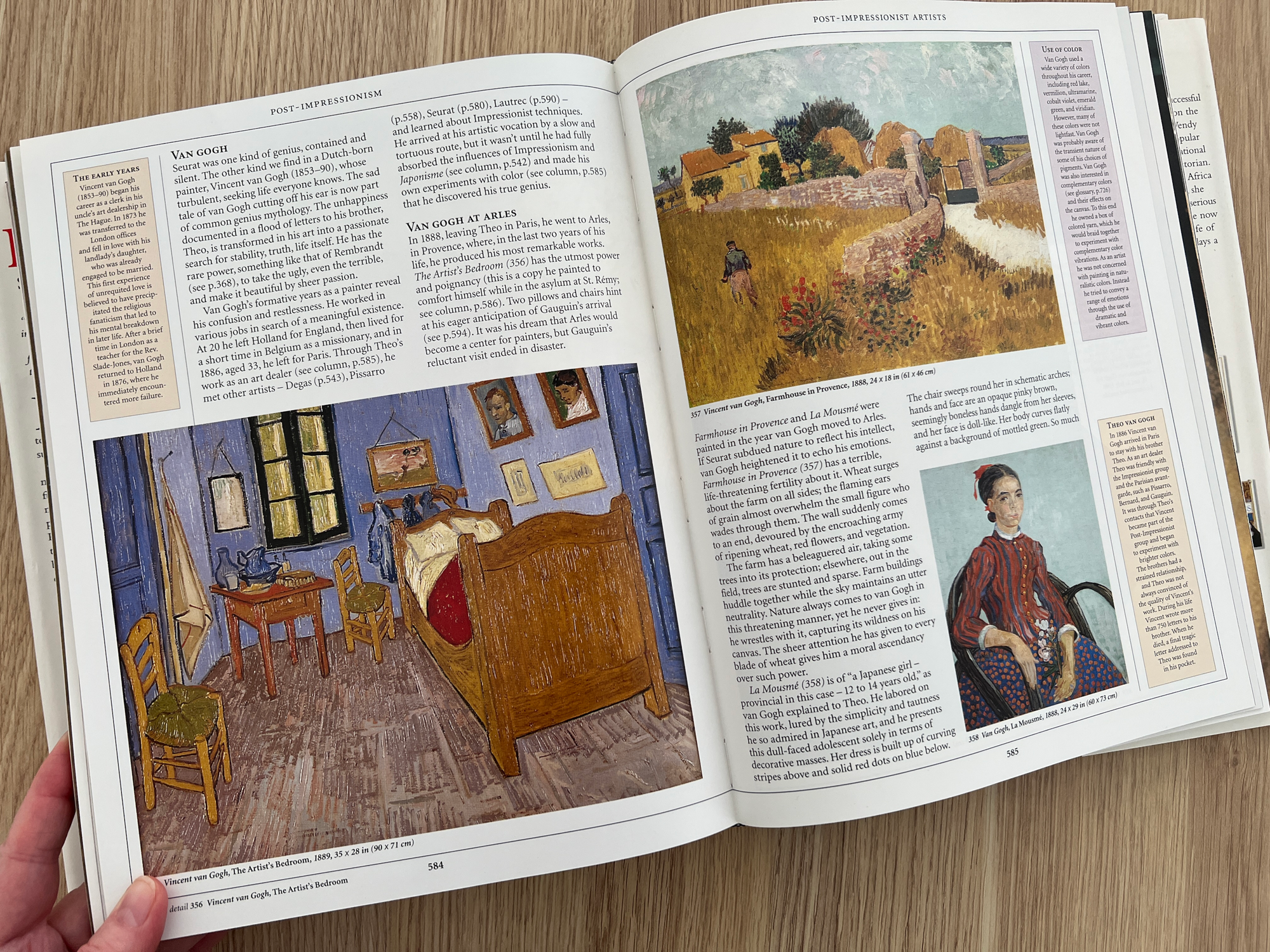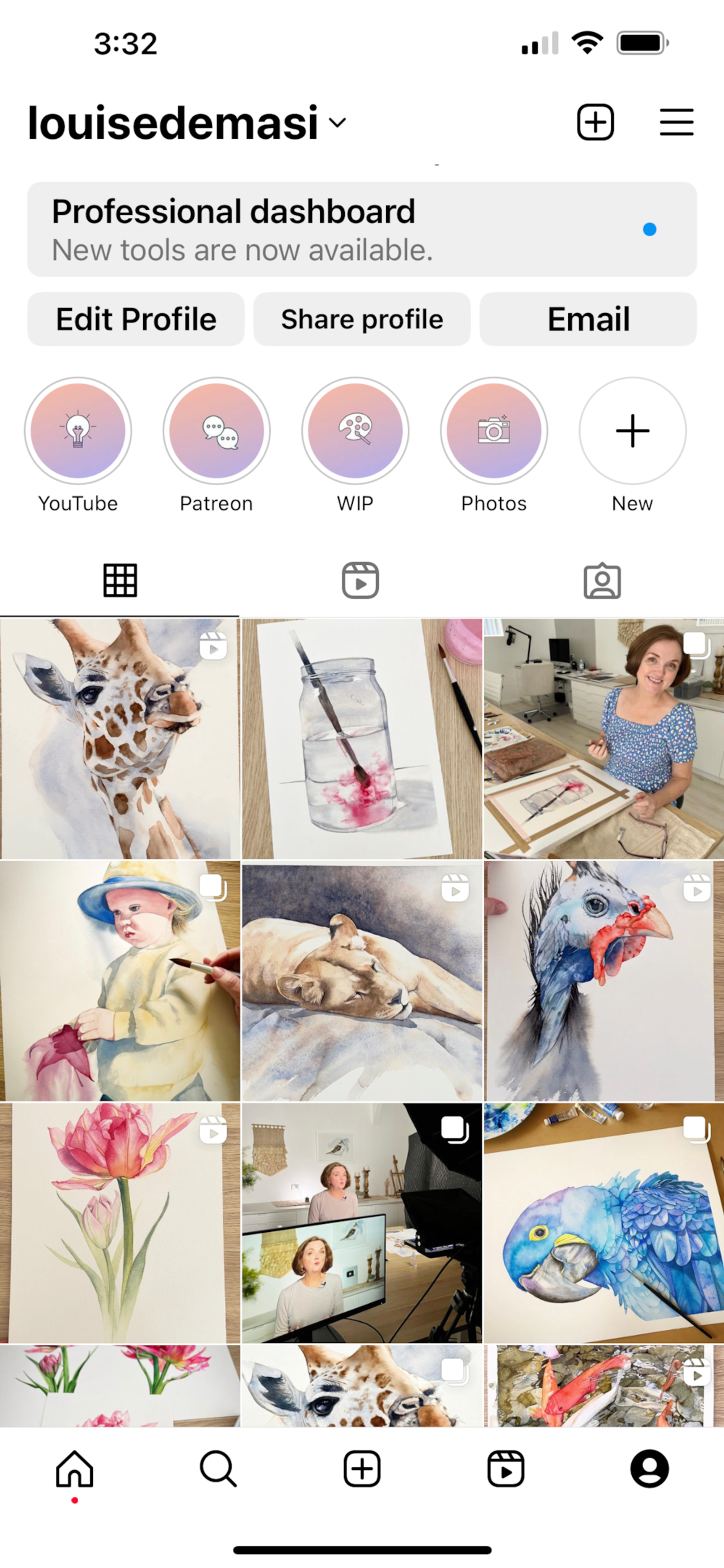7 Habits of Successful Artists
Pablo Picasso once said, “Inspiration exists, but it has to find you working.”
It's so true! Successful artists know that their habits are the backbone of their journey to greatness.
So, let's dig into all the stuff that makes creative people successful.
Practice
We've all heard the phrase 'practice makes perfect' but when it comes to art, we need to add more meaning to that phrase. Instead of just practicing, successful artists are mindful of what they are practicing. It does them no good to practice an incorrect technique or an ineffective colour mixing strategy because that just reinforces mistakes.
I made the same mistake for years when I first started painting in watercolour. I avoided mixing colours because I didn't bother to learn how. Instead, I used colours straight out of the tube, and as a result, many of my earlier paintings are too vibrant and garish. Looking back, I realise the importance of taking a step back and evaluating my approach to avoid such issues.
To be successful as an artist you should constantly evaluate what's working and what's not. Ask yourself, 'Is this technique serving my vision?'
It requires patience, attention, and a willingness to accept that sometimes, we might be our own biggest obstacle on the path to success.
Don't be afraid to step out of your comfort zone. Experiment with different styles, techniques, and mediums, push the boundaries of your art and take calculated risks. You don't need to pursue perfection, you just need to pursue progress.
Joseph Zbukvic is a master watercolourist and in his book 'Mastering Atmosphere & Mood in Watercolor,' he mentions that he looks forward to the road of new discoveries and challenges. He hopes to 'discover and conquer new levels of competence.'
It is truly inspiring to witness his dedication to improvement, and he truly is a master of his craft. Joseph's unwavering pursuit of mastery serves as a powerful reminder for us mere mortals to persevere in our artistic endeavours through consistent practice and dedication.
Discipline
Discipline helps artists establish a work routine, which fosters productivity and consistency. If your goal is to be a professional artist you need to be dedicated to your practice. You have to show up every day, whether you feel like it or not.
Professional artists encounter challenges just like amateur artists. They have creative blocks and other personal obstacles they have to overcome. Their discipline helps them to stay committed to their artistic path during difficult times.
If you are like me, you probably frequently struggle with perfecting your technique, and there are times when your paintings may fall short of your expectations. Instead of throwing in the towel, persevere and strive for improvement. Don't give up easily and continue to push through your problems.
In her book, 'Painting Portraits and Figures in Watercolor,' Mary Whyte mentions that she could wallpaper ten houses with the hundreds of paintings she has torn up over the years. She says, "When you make mistakes, you have two choices: Give up or try again."
If you want to be a successful artist, be disciplined enough to try again......and again.....and again.
I painted from the same image 5 times before I finally felt I had some success.
Consistency
Consistency is a common and essential trait among successful artists. An artist who is consistent will follow a routine, become familiar with their tools, refine their techniques, and overcome creative blocks by creating regularly, regardless of mood or circumstances. By training their brain to be consistently creative, they witness their skills improving over time.
Here are 5 reasons why you should be consistent:
Skill Development: Regular practice and consistent work are so important in the quest for artistic growth. By dedicating consistent time to your craft, you will improve your techniques, broaden your skills, and become better at expressing your ideas.
Establishing an Artistic Voice: Consistency allows you to explore and develop your unique artistic voice. As you consistently work on your art, you'll discover themes, subjects, and styles that resonate with you personally. This artistic voice will help your work become recognisable to your audience.
Growth and Progression: Consistent effort leads to steady growth and progression. Whether it's mastering new techniques, experimenting with different styles, or trying out different subjects, if you are consistent you are more likely to advance in your artistic journey than those artists who aren't consistent.
Building an Audience: Consistent output builds trust and loyalty with your audience. When people know they can expect new and engaging work regularly, they are more likely to follow you and support your work, and they may even become collectors.
So remember, it's not about dramatic leaps, but about small, steady, steps. If you engage with your art consistently, your skills will improve.
Maintain an Organised Workspace
While having a dedicated workspace can be beneficial to an artist it is not an absolute requirement for success. Whether you have a custom built studio or a small space in the corner of the living room to do your work, the organisation of your workspace can have a direct impact on your productivity and your creativity.
An organised work space doesn't mean that everything has to be in rigid pristine order, it just means having an area that invites creativity and enhances productivity. If everything is everywhere you might struggle to find a particular tool or art supply when you need it.
A cluttered, disorganised space might hinder your creativity and productivity, whereas a well organised space could help to stimulate your creativity.
I am grateful that I have my own studio to paint in now. For years I worked in our garage and then I progressed to a spare bedroom when all of the kids moved out. I quickly out grew the bedroom though as my career grew.
In 2022, we built a shed on our property and I work in there now.
I consider myself fortunate to have ample storage space in my studio, allowing me to keep everything organized and easily accessible. Maintaining a tidy environment is crucial to my creative process. After each painting session, my studio tends to get quite chaotic, with paints, brushes, wet towels, masking fluid, dirty water containers, erasers, and various tools scattered all over the place.
However, I have established a routine of cleaning up the studio between paintings. Despite the initial mess, I find peace in the act of restoring order. Putting everything back in its designated place before starting a new painting helps me clear my mind and get into the right headspace for my next painting.
Having a clean and well-organised space helps me stay focused, reduces distractions, and fosters a productive and harmonious artistic atmosphere, enabling me to fully immerse myself in the joy of creating art.
Networking and Engaging with the Art Community
Building a supportive network within the artistic community is important. If you have enough time, try to attend workshops, exhibitions, and events to connect with fellow creatives, gain feedback, and explore collaboration opportunities.
Creating art all day every day can be a lonely pursuit so, to avoid feelings of isolation, it can be beneficial to interact with fellow artists. Doing so, can lead to sharing knowledge and it may spark inspiration and open doors that lead to new creative possiblities.
When you spend time with like minded creative people it not only enhances your personal and professional growth but it may help you when you are faced with setbacks or creative blocks. A network of other artists may provide encouragement and advice to help you overcome obstacles.
Handling Rejection and Criticism
Successful artists learn how to handle rejection and criticism. Creating art can be met with both praise and criticism and it takes discipline to be able to use feedback as an opportunity for growth. We need to develop a thick skin and realise that any negative feedback isn't an attack on our skills or creativity rather it is a mirror that reflects areas we may need to work on.
It's not possible to please everyone and because art is subjective, different people will have different responses to it. And that's okay. What matters is being open to take note of the feedback, sift through it and extract the parts that will serve your artistic growth.
Of course, not all feedback is constructive or helpful and it's important to know the difference between feedback that has substance and criticism that lacks any valid points.
If we look to history, Vincent van Gogh, one of the most renowned painters in history, faced significant criticism during his lifetime. His unique and bold style was not widely accepted at the time, and he struggled financially and emotionally. Despite the criticism, van Gogh continued to paint prolifically and passionately. Today, he is celebrated as one of the greatest artists of all time.
Self Promotion and Marketing
Self-promotion and marketing are crucial skills for artists to succeed in the modern art world. No matter how talented you may be, without effective self-promotion and marketing, your work may not reach its full potential audience.
The internet has revolutionised the way we connect with our audience. Social media platforms like Instagram, Facebook, and Twitter (or X as it is now called) allow you to share your work directly with a global audience, bypassing the need for a physical gallery space. You can create your own website or online portfolios to display and sell your artwork, reaching potential buyers worldwide.
Website design platforms like Squarespace, Wix, and WordPress have revolutionised the process of creating a website, making it accessible to everyone, including artists. These platforms offer user-friendly interfaces, drag-and-drop functionalities, and a variety of templates, allowing you to showcase your work and create a professional online presence without the need for advanced coding skills. With features like image galleries, sliders, and grid layouts, you can present your art in a professional and engaging manner.
In addition, online platforms such as Etsy, Saatchi Art, Art Finder and others allow you to manage your sales without costly gallery fees.
Similarly, virtual galleries and online exhibitions are becoming quite popular because artists can showcase the artwork alongside other artists and reach people from all over the world. However, while they may provide advantages they don't quite capture that great sensory experience you get from seeing art in person.
With today's communication tools, you can directly engage with potential buyers, art collectors, and art enthusiasts. This direct communication allows you to have a more personal connection between yourself and your audience, leading to stronger relationships and potential sales.
Social media has captured our attention but we have reached saturation point and it's becoming much more challenging to stand out from the crowd. The decision to pursue gallery representation or embrace self-promotion through social media depends on your individual goals, preferences, and the specific art market you wish to target.
Being a successful artist requires dedication, resilience, and a willingness to continuously learn and evolve. It's not just about talent; it's about honing your skills, seeking feedback, and pushing the boundaries of your creativity. As you cultivate these habits, you'll find yourself on a fulfilling journey towards success, with the potential to impact and inspire others through your art. So, keep working and let your inspiration soar!
If you are interested in learning to paint in watercolour, I have over 170 online, voiced over watercolour tutorials for all skill levels.
The galahs are available to purchase as a print in the shop.
Further reading: 9 Watercolour Texture Techniques
